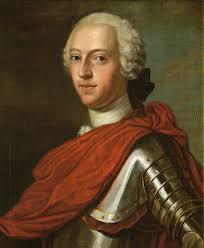
Charles Edward Louis John Casimir Sylvester Severino Maria Stuart. On December 31 1720, he was born in Rome. He was the elder son of James Francis Stuart and the Polish Princess Clementina Sobieski and grandson of the Catholic King James II and VII and Stuart claimant to the throne. They died while in exile in France after his daughter Mary II and her husband William III were invited by the English Parliament to replace him after the revolution of 1688.
On a hereditary basis, the claim to the throne was far superior to that of their Hanoverian cousins, but the Act of Succession forbade Catholics from succeeding.
The supporters of the exiled king were called Jacobites. It was said that they made several attempts to regain the throne, most especially the 1715 and 1745 rebellions.
Charles Edward had a fortunate childhood in Rome, where he was raised Catholic in a loving but bickering family.
As the legitimate heirs to the throne, his family lived with a sense of pride, firmly believing in the divine right of kings. He was said to be an attractive and spirited child who his parents adored. Charles was only fourteen years of age when he experienced warfare for the first time at the siege of Gaeta. He was reported to have conducted himself bravely when under fire. However, his parent’s relationship got worse; over the years, his super religious mother spent long periods of unhealthy fasting, and sadly this affected her health, and she eventually died in 1735. Charles was good with languages as he was taught to speak fluently English, Italian, French and Latin.
December 1743, Charles’s father, James II, named him Prince Regent, giving him the power to act in his name. 18 months later, he led a French-backed rebellion hoping to place his father on the throne of Great Britain.
In 1744, his father, James Francis, managed to obtain the support of the French government, after which Charles set sail for England. He was able to raise funds to buy ammunition, and he acquired three ships. The Elisabeth, the Du Teillay and La Doutelle. While en route, Elisabeth was attacked by a British man of war and had to return to France, while the La Doutelle was forced to flee. He continued with the Du Teillay, which landed him alongside seven companions at Hebridean Island of Eriskay on July 23 1745. He sent messages to the clan chiefs informing them of his presence and soliciting their support. Although he was highly welcomed, he was informed that their support would not be available and was instead advised to go home by Alexander MacDonald. Charles answered him exquisitely, saying, ‘Sir, I have come home, and I will entertain no notion of returning to the place whence I came, for that, I’m persuaded that my Highlanders would stand by me.’
Irrespective of the great reception he received, he set sail the next day and arrived at the bay of Loch nan Uamh. Although he had hoped for support from the French fleet, it was severely damaged by storms, so it had to return, and he was left to raise an army in Scotland.
Alright initially discouraged, Charles gained the support of Donald Cameron of Lochiel, and thereafter he had enough support to begin a serious rebellion on August 19; he raised his father’s standard at Glenfinnan, where he was able to gather enough force to enable him March towards Edinburgh.
A bounty was placed on the head of Charles Edward, and in return, he responded by placing the same amount for the capture of the ‘Elector of Hanover.’ The Jacobite army gained entry into Perth, where they were joined by Lord George Murray, the brother to the Duke of Athol, whom Charles appointed commander of his army.
The army marched south through the autumn, taking Edinburgh in early September. It would have been wise only if Charles waited for the ongoing war on the continent in Edinburgh, a move that would have exhausted the Hanoverian troops. Instead, fueled by a strong desire to reclaim the throne in London, Charles marched his army into England, getting as close as Derby before being forced to retreat. The Jacobites retreated north, up to the highland capital, Inverness, Charles Edwards’s most important holding.
On the night of April 15, 1746, the Jacobites attempted a surprise attack, but they got lost in the marsh and darkness, rendering the attempt a dismal failure. As the sun rose the following day, Charles ordered his Jacobite army, sleep-deprived and starving, to prepare for battle on the flat, muddy Culloden Moor against the advice of his general Lord George Murray and insisted on fighting on flat, open ground where his forces would be exposed to superior government firepower. In less than an hour, the Hanoverian army annihilated the Jacobites, and Charles was nowhere to be found. In tears, the Young Pretender had fled the battlefield.
Aided by Flora MacDonald, Charles was said to have escaped to the Isle of Skye. He lived for several years in exile and was said to have died in the arms of his daughter, Charlotte, in 1788.
